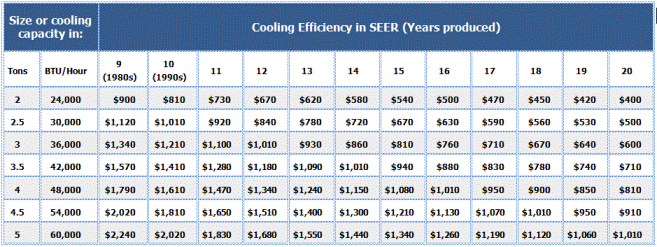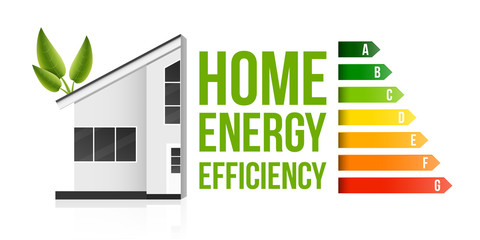America's Leading Discount HVAC Supplier Since 2001 ... and now, NASCAR Racing Sponsor
and now, NASCAR Racing Sponsor
Ask an Expert
866 862 8922
 Hours of Operation
Hours of Operation 8am - 8pm EST
11am - 8pm EST
What is a Good AC SEER Rating?

What is a Good AC SEER Rating?
Understanding SEER Meaning and how to choose the right SEER for your next AC system (Based on Science)
Here’s a few commonly asked questions we are going to answer in this comprehensive SEER rating guide:
What is a good seer rating for an air conditioner?
Is a higher seer rating worth it?
How much more efficient is a 16 seer vs a 14 seer?
What seer rating should I buy?
Is it better to have a high or low seer?
Seer rating calculator
The meaning of seer
What is the minimum seer rating for 2020
The Meaning of SEER
Simply put, SEER stands for Seasonal Energy Efficiency Ratio. The resulting number that is applied to an air conditioner is called its SEER rating.
The higher the SEER rating the more energy efficient a given air conditioner is (we're assuming for comparison purposes that all other variables are the same between the systems compared).
Here's where the confusion begins: How high of a SEER is high enough? Given a choice of 3 different SEER ratings which one should you select? The answers provided to homeowners here are almost always incomplete, if not just plain wrong.
Let's start by remembering that the most efficient air conditioner known to man is one that is in the "off" position.
While we are speaking to energy efficiency, check out our comprehensive guide to the most energy efficient air conditioning systems on the planet, ductless mini split air conditioning and heating systems.
The least efficient air conditioner is one that runs continually, never shuts off and never cools the home. Between these two extremes are many shades of gray that we will attempt to clarify here.
Think of SEER ratings the same way you do MPG ratings for automobiles, but instead think of BTU's produced for each unit of energy consumed (watts). Assuming you are offered 3-4 choices of SEER ratings by a heating and cooling contractor that span the gulf between the federal minimum (14 SEER) and the current extreme high (23 SEER) and are left to fend for yourself in the selection process, let's examine how you can make the one right choice every time. (And there will always be just one right choice for you).
Chances are, you would be offered 2, or 3, or 4 SEER rating choices along with some limited and/or biased information about the best choice and finally settle after discovering that you haven't been equipped with the right information to choose the one right SEER rating for your needs.
Now for a little light math.
Seer rating calculator - Here’s how the SEER formula works
Divide the cooling system's rated BTU's by its stated SEER rating to determine how many watts it consumes per hour, (Kwh stands for kilowatt hour).
Here's the formula (we'll use a 3 ton, 15 SEER system for this comparison):
36,000 BTU's (3 tons- there are 12,000 Btu’s per ton of cooling) divided by 15 SEER = 2400
36,000 divided by 15 = 2400
Not too bad so far (you're past the hardest part) but what does the outcome (2400) mean? This is simply the number of watts consumed each operating hour by the system.
The last step is to determine your annual operating cost to use as a basis of comparison to determine which of the multiple SEER rating choices you've been offered is best.
To do that we need to know how many hours annually, on average, your system will operate. While many factors are involved here let's assume that you operate your system the same way most people in your geographical area do. This assumes that you:
- Set your thermostat at or near 76-78 most of the time
- Turn up/ off your system when you're gone for 4 hours or more
- Change your filter about 40% less than you should
- Have the system tuned up periodically
- Live in a home of average insulation and have average quality windows

Calculate Annual Air Conditioner Operating Costs Based on SEER Rating
If we can all agree that these relatively simple assumptions will form the basis for our comparison, let's move to annual operating costs as an outcome of SEER rating.
Fortunately, a lot of studies have been done to tell us how many hours our air conditioner will operate based on our geographical area and using the assumptions listed above. To keep it simple, we'll use an average in Florida, or 2500 hours of operation hours annually.
Remember the number 2400 from above? That was the number of watts our example 15 seer air conditioner consumed each hour it operated. Now that we know our number of operating hours annually (2500) we simply multiply these two numbers to get the total numbers of watts consumed on an annual basis.
Here's how it works:
2,500 hours of operation X 2,400 watts consumed per hour = 6,000,000?
I know what you're thinking - "you promised 'light' math and 6,000,000 is hardly light!" You are correct so let's simplify. If you have a copy of your power bill handy, you'll notice you are billed in increments they refer to as Kwh (kilowatt-hour).
A Kwh is simply a unit of 1000 watts, which is how they calculate your bill. We just need to convert our formula to theirs, which we will do by dividing the total watts consumed per hour (2400) by 1000, which equals 2.4.
2400 (watts) divided by 1000 = 2.4 (Kwh)
This new number (2.4) represents the number of watts your system consumes hourly, expressed in one thousand watt units, or in this case 2.4 of these thousand-watt units (Kwh).
Now let's go back to our previous calculation:
2500 hours of operation X 2.4 Kwh consumed per hour = 6,000 Kwh consumed by our example air conditioner annually.
(Don't worry - at the end I'll give you a simple review calculation that will have you getting annual operating costs very quickly).
Is a higher SEER rating worth it?
Here's how we determine energy consumed (watts):
- Divide Btu's produced by the stated SEER rating - Example: 36,000 Btu’s (3 tons) divided by 15 SEER = 2400 (watts)
- Convert this to a figure used by your power company to calculate your bill - Example: 2400 watts divided by 1000 = 2.4 Kwh (2.4 one thousand watt units)
- Determine the number of annual hours used by the operation of your air conditioner based on your geographical region. - Example: Florida air conditioners operate an average of 2500 hours annually.
- Multiply the number of Kwh your air conditioner consumes (2.4) each hour times the number of hours it operates annually (2500) to determine annual Kwh usage - Example: 2.4 Kwh X 2500 hours annually = 6000 Kwh annual consumption
Convert Annual Kwh Consumption to Dollars
Now all that is left is to convert these numbers to an annual cost in terms of something we all know a thing or two about - dollars.
To do that let's look again at your power bill and determine the total cost per kWh. (Hint - It will be between 12 - 15 cents around most areas of Florida). The average Kwh rate in Florida is just under 14 cents per Kwh. as of 2020.
Check the average cost per Kwh in your state here.
This is your cost for each Kwh your air conditioner (or any electronic appliance for that matter) consumes. Our studies show that FPL customers pay about 11.5 cents per Kwh, including taxes, franchise fees, peak usage, and other fees.
6000 kWh consumed annually X 11.5 cents per Kwh = 690 or $690.00
(Enter it in your calculator exactly as 6000 x .115 to avoid confusing decimals and zeros).
How to Calculate The Annual Cost of Air Conditioning Based on SEER - Example Formula
- 36,000 Btu's divided by 15 Seer = 2400
- 2400 divided by 1000 = 2.4 Kwh consumed each hour
- 2500 hours of operation annually
- 2500 x 2.4 = 6000 Kwh consumed annually
- 6000 x 11.5 cents cost per Kwh = 690 or $690.00 annual cost of operation for a 3 ton, 15 SEER air conditioner
You'll notice when you divide 36,000 by 13 SEER you get 2769.2307. Don't be confused, just drop everything to the right of the decimal and round 2769 to 2800 as your Kwh consumption or, the number of watts consumed per hour. You'll be very, very close.
Compare SEER Ratings Based on Cost
Let's fast forward to the annual operating cost for each of the following using the same 3 ton air conditioning system:
- 13 SEER Annual Operating Cost is $805.00
- 14 SEER Annual Operating Cost is $747.50
- 16 SEER Annual Operating Cost is $632.50
- 23 SEER Annual Operating Cost is $448.50
- 300 SEER (Just kidding - but can you do it??)
Minimum AC System SEER Rating 2020 and beyond
The new standards effective in 2023 require a seasonal energy efficiency ratio (SEER)—a measure of a system’s cooling performance—of no less than 14 SEER for residential systems in the northern part of the United States and 15 SEER in the southern part of the United States, where cooling loads are a larger share of home energy use.
Higher SEER ratings indicate more energy-efficient equipment. [1]
[1] US Energy Information Administration: JULY 30, 2019 Efficiency requirements for residential central AC and heat pumps to rise in 2023
https://www.eia.gov/todayinenergy/detail.php?id=40232
What SEER rating should I buy?

You now want to determine the one and only one SEER rating that is right for you. The answer is simple and here is what the HVAC industry doesn’t usually mention:
How long do you plan on owning and operating the system, or how long will you live in the home the system is purchased for?
This is the absolute key to your decision because the shorter your ownership period the greater your total cost will be due to a shorter amortization time of the purchase price (the fewer years you can spread the purchase price over before you no longer receive any operational benefits).
Unfortunately, from my years in the field, this is almost never brought into the equation.
The time value of money is defined as the opportunity value of other investments missed because of your increased investment in a SEER rating higher than 13. Let's assume your system is broken and you need a new one. We know that 14 SEER is the "floor" pricing because, assuming you shopped around, 14 SEER will be the lowest price you are offered as it the federal minimum in terms of efficiency, hence it is the base or floor pricing.
How much more efficient is a 16 SEER vs a 14 SEER?
Let's assume your "floor" pricing is the pricing of a 14 SEER 3 ton heat pump system sold online and that price is $2200.00. Let's assume AC Direct (or any contractor) offers 3 other SEER options with uninstalled pricing as follows:
We don't need to calculate the return on the 14 SEER because you have no incremental increase in investment because it is your "floor" pricing - everything else is compared to the 14 SEER to determine if the increased price will pay itself back to you.
Remember, your system is broken and you need it replaced so 14 SEER is the choice everything else is compared to, hence the "incremental" increases are the price differences associated with any given (higher SEER) system as compared to the 14 SEER system... Just the difference, not the total price.
*Hint - Don't let your contractor "assume" your existing system is a 6 or 7 or 3 SEER and compare the new one to it. This is a trick of the trade that you want to avoid at all costs if you have to replace your air conditioner anyway.)
Make all comparisons to a 14 SEER and don't let them play what I like to call the "Make up a SEER rating and play the Investment Shenanigans" game. No fun for you at all.
Let's see what we have using the pricing above.
Begin by comparing the 14 SEER to the pricing of the 16 SEER
The difference between the two is $731. I asked you earlier about your expected ownership period and that is the next variable in our search for true value.
Let's use 5 years because that is the number most quoted when homeowners are asked how many more years they plan to live in their current residence. (the fact that they usually stay longer is irrelevant to us).
That means that the additional (incremental) increase to purchase the 16 SEER over the 14 SEER is going to cost you $731.00. This is the base number you are trying to determine whether or not will be returned to you from the annual operating cost reduction achieved by the 2 point increase in SEER rating.
Let's look at the annual cost again to determine the savings achieved by the two-point advantage the 16 SEER has over the 14 SEER based on 2500 annual operating hours for your air conditioning system. (Do not include heating time here).
14 SEER - $747.50
16 SEER - $632.50
The 16 SEER saves $747.50 - $632.50 = $115.00 over the 14 SEER each year. Multiply these annual savings times your expected years of occupancy and you have a grand total over our 5-year assumption that equals $575.00 (5 X $115.00=$575.00.
Seer rating can and will enhance Utility Rebates

Be sure to factor in utility rebates when calculating your return as these reduce your purchase price accordingly. There are local utility enticements in place to make the higher SEER rating options more attractive to homeowners.
Using AC Direct pricing, these credits will generally smooth out the pricing difference to some degree, but that assumption can't be made with all pricing you'll receive elsewhere.
(There is another argument that can and will be made for the 16 SEER, and that is additional comfort-enhancing features, most notably in this case, a variable speed air handler. If you live in a hot humid climate, this is an extremely popular feature to consider.
A variable speed air handler (the indoor unit) can remove up to 4 times as much humidity when compared to a non-variable unit.
Lowered humidity levels within your home or office allow you to increase the thermostat temperature setting by 1-2 degrees, which, in turn, reduces the system operating time by 10-20%, greatly enhancing your energy savings even further.
A home with a humidity level in the range of 40-45% will feel significantly more comfortable at almost any temperature due to the greatly reduced humidity levels.
*Hint – When dealing with a local contractor who is offering both the equipment and the installation services, don't fall for another common trick whereby the 14 SEER option is prohibitively priced to make the higher SEER ratings seem like an outstanding value.
The idea here is to make higher SEER ratings appear to provide lower incremental price increases, thereby unfairly enticing you to consider them.
Avoid this shell game entirely by using the average of your 14 SEER estimates to establish your floor pricing, throwing out any pricing from shell game antics.
When you purchase a new air conditioning system for your home, you may be offered a bewildering maze of options, including higher SEER ratings.
It is your contractor's job to provide you with clear, concise information that will allow you to make a confident, informed choice about these options without resorting to the "trust me" principle.
Call us toll-free at 1-866-862-8922 if you are having trouble getting the answers you need and we will be happy to spend a few minutes with you, even if you are purchasing elsewhere.
If you have questions or need advice, give us a call today!
Click for more helpful articles



